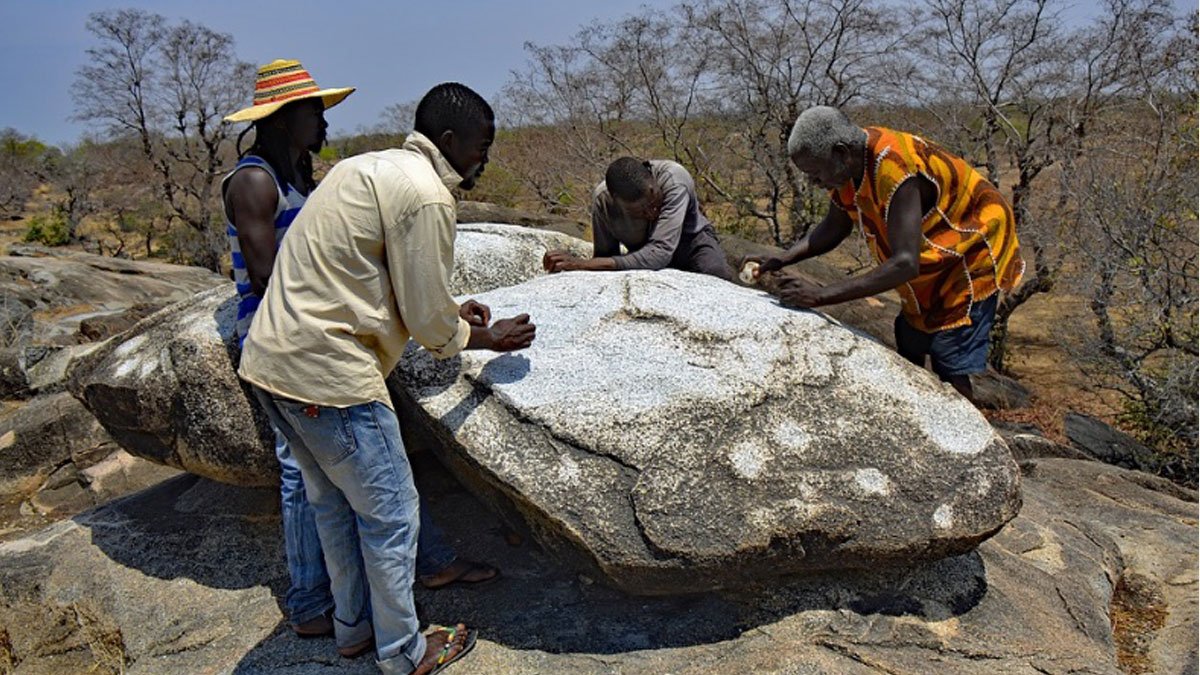Thesavanna Features
Pikworo Slave Camp – How slaves Journeyed to the Unknown 1
The sight and the overall experience of Pikworo slave camp takes away all doubts about the veracity and reality of the slave trade in Africa. The presence of empirical evidence in the form of relics is enough to disabuse all doubting minds. Perhaps the cliché, “seeing is believing” should be the emphasis here.

Table of Contents
Pikworo Slave Camp – A place of memory
The sight and the overall experience of Pikworo slave camp takes away all doubts about the veracity and reality of the slave trade in Africa. The presence of empirical evidence in the form of relics is enough to disabuse all doubting minds. Perhaps the cliché, “seeing is believing” should be the emphasis here.
Pikworo Slave Camp is geographically situated approximately 3 KM West of Paga in the Upper East regions of Ghana. It’s located in a village called ‘Nania’. The camp is one of the few tourist sites in Africa with remarkable routes of historic relevance and is known in history as the hoarding, auctioning, and transmission point of slaves. It acted as a transit camp for the slave trade. Slaves were held hostage in the Pikworo slave camp before being transferred to Salaga in the Northern Region. In short, it acted as an intermediary between slave traders.
The Story behind the Camp.
Legend has it that, the Pikworo Slave Camp was founded by a brave hunter and farmer. The village (Nania) was then developed into a trading centre for the Hausa, Mossi, and Zambrama traders where their exchange activities took place.
The story of the slave trade sound is really gory sometimes. However, coming face to face with the facts of history gives a refreshing feeling of how far we have come as humans in our very existence. It’s sometimes incomprehensible and shocking how the purpose of a fully-fleshed human being could be altered and converted to the extent of being a slave. But the evidence available is more factual than fiction.
Centuries back, the slave trade was a very lucrative business activity and because of its dominant nature, it enriched slave masters and other people of higher ranks in the slave market. Nania became the first stopover and an auction market for slaves captured in surrounding lands as well as those brought from the Sahara. It was situated in a very rocky area hence the name ‘Pikworo’ which means ‘rocks of fear’. The rocky nature of the place largely defined the living conditions of the slaves in the camp.
Living the Camp before a journey to the unknown
Life in the camp could best be described as rude and crude. Unlike the luxuries we enjoy today, slaves captured and sent to Nania had to be tied against trees and rocks to sleep. They ground cereals on rocks. They prepared food on rocks. They ate from holes created on rocks and drank from a non-drying opening in rocks.
They walked barefooted and experienced inhuman treatments as penalties for wrongdoing or non-compliance with directives. For instance, there was a site of the camp dedicated to punishing slaves where they were tied to a rock and made to watch the sun.
Dead slaves were buried in groups in a single hole dug around the camp and covered with a medium-sized rock placed on top of the grave as an epitaph to indicate the site as a burial ground for the dead.
Ingenuity of captives
One interesting aspect about the stopover of slaves at Nania was that, despite the harsh conditions they faced, slaves had the chance of producing music with stones used to hit the rocks in a rhythmic manner, creating a pleasant sound with some of the slaves dancing to the tune. In all it won’t be wrong to say slaves in Pikworo slave camp lived “rocky” lives since almost every aspect of their lives was hinged on rocks.
Visiting the Pikworo slave camp gives a lot of flashbacks and touching memories to behold-Memories that indicate the actual toil of our forefathers and some of the circumstances they faced and memories that give you insights towards making the world a better place. Until you visit the ‘Pikworo’ slave camp, you’ll always be tempted to liken the storylines of “12 years a slave” to “Tom and Jerry”.
The former is a real-life issue and the latter is fiction. Don’t dwell in doubts for the rest of your life. Spare a moment, explore and reconnect with the past: it’s a priceless experience.
CHECK OUT – The Safest Ways to Northern Ghana exposed
Story by: Bobi Awedana Herty/thesavannaonline
Pingback: Top Tourist Sites in Northern Ghana: Discover the Hidden Gems - thesavannaonline
Pingback: Paga Youth Movement Urges Mahama to Prioritise Upgrade of Paga/Navrongo Airstrip
Pingback: GTA takes PANAFEST and Emancipation Day 25 to Pikworo Slave Camp
Pingback: Lessons from Pupils’ Slave Trade Reenactment in Call 4 Reparative Justice